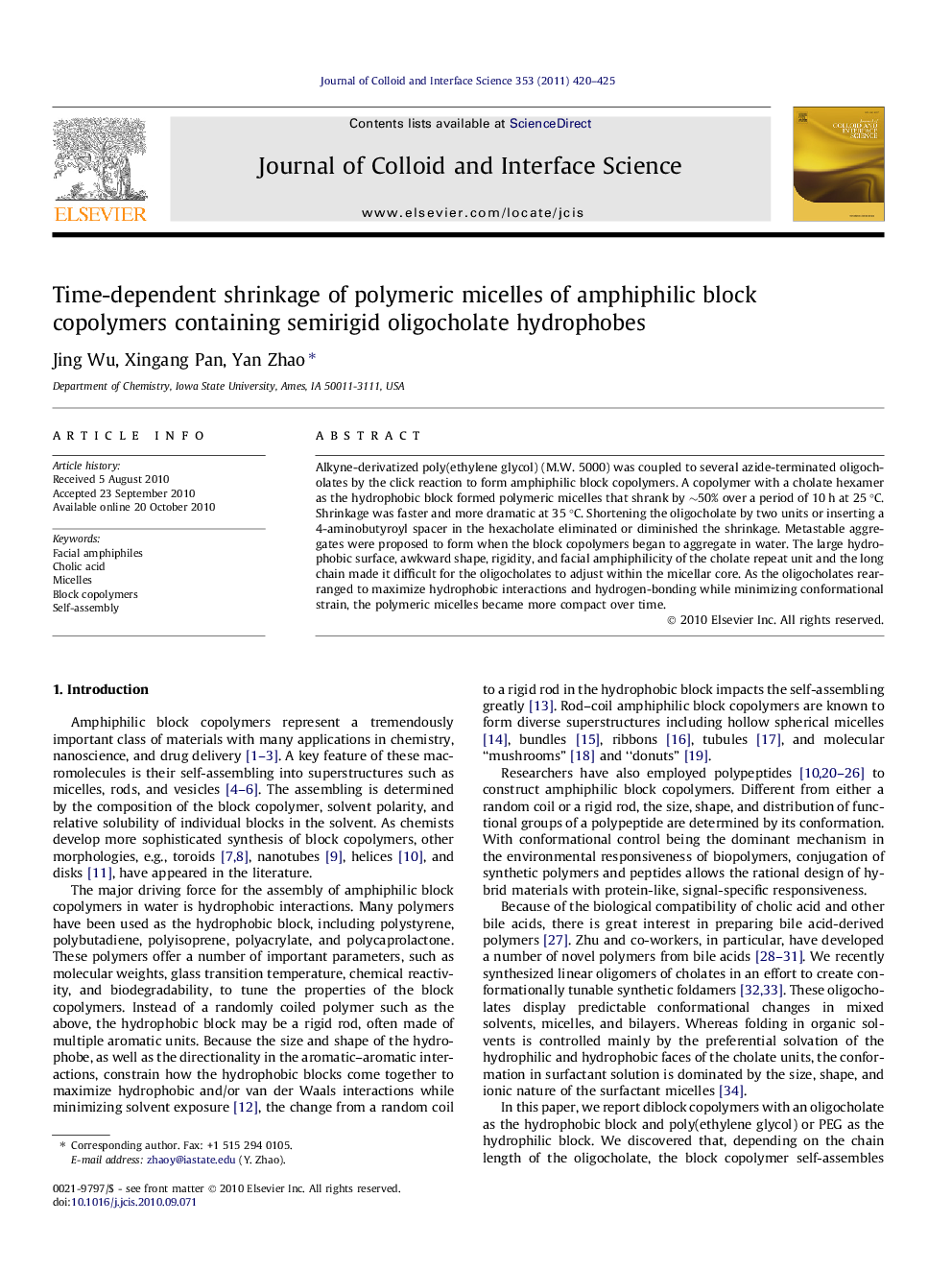| Article ID | Journal | Published Year | Pages | File Type |
|---|---|---|---|---|
| 609174 | Journal of Colloid and Interface Science | 2011 | 6 Pages |
Alkyne-derivatized poly(ethylene glycol) (M.W. 5000) was coupled to several azide-terminated oligocholates by the click reaction to form amphiphilic block copolymers. A copolymer with a cholate hexamer as the hydrophobic block formed polymeric micelles that shrank by ∼50% over a period of 10 h at 25 °C. Shrinkage was faster and more dramatic at 35 °C. Shortening the oligocholate by two units or inserting a 4-aminobutyroyl spacer in the hexacholate eliminated or diminished the shrinkage. Metastable aggregates were proposed to form when the block copolymers began to aggregate in water. The large hydrophobic surface, awkward shape, rigidity, and facial amphiphilicity of the cholate repeat unit and the long chain made it difficult for the oligocholates to adjust within the micellar core. As the oligocholates rearranged to maximize hydrophobic interactions and hydrogen-bonding while minimizing conformational strain, the polymeric micelles became more compact over time.
Graphical abstractThe polymeric micelles of oligocholate–PEG block copolymers shrank over a period of 10 h.Figure optionsDownload full-size imageDownload high-quality image (72 K)Download as PowerPoint slideResearch highlights► Diblock copolymers with facially amphiphilic oligocholates as the hydrophobic building blocks were prepared. ► The block copolymers self-assembled into polymeric micelles that shrank by 50% over a period of 10 h. The shrinkage was even faster and more dramatic at higher temperatures. ► Fluorescence quenching studies indicated the hydrophobic core of the micelle became more tightly packed over time.
